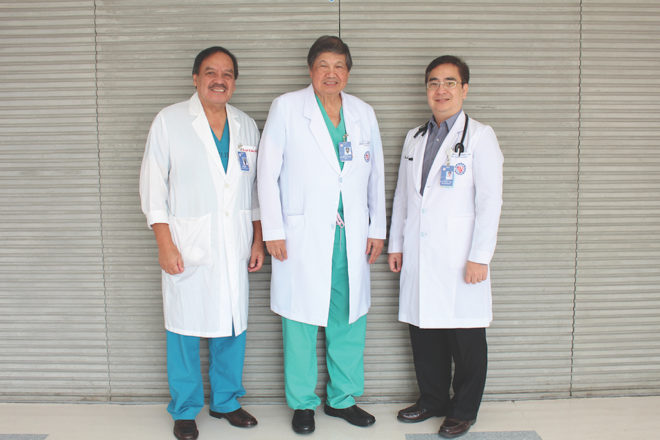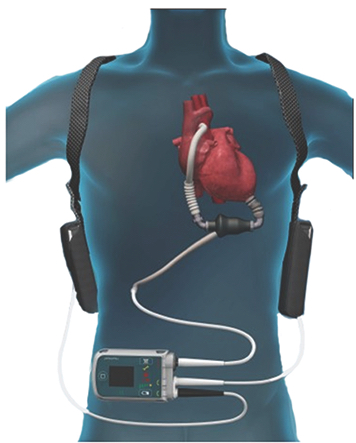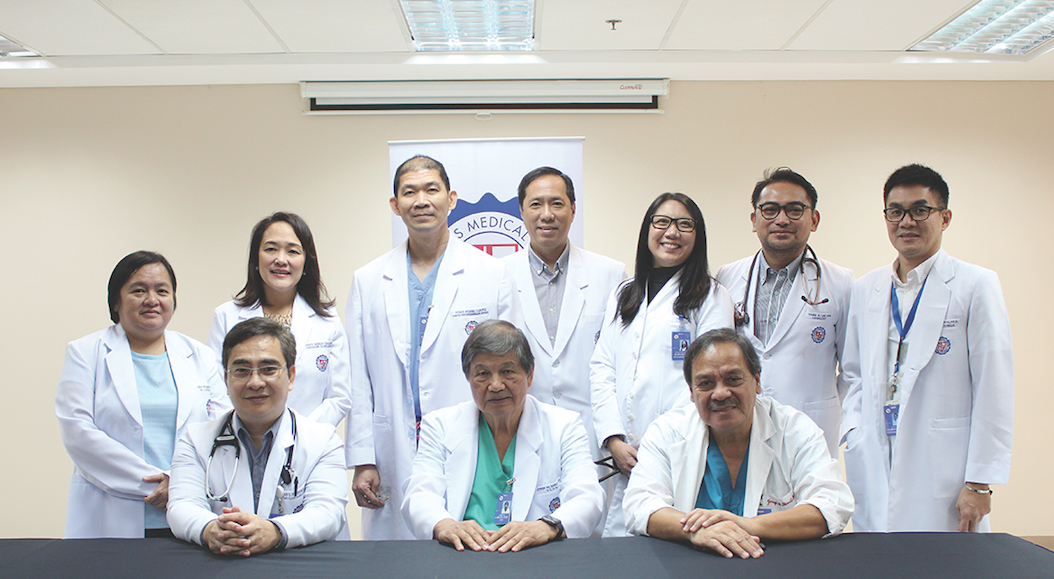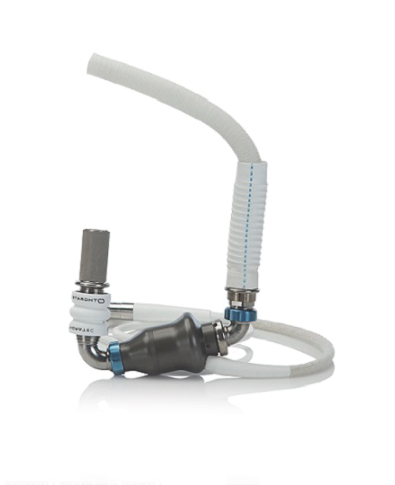
For years, a 70-year-old patient has been suffering from heart failure. Just after short “walks”, his failing heart would leave him breathless. He also experiences shortness of breath whenever he lies down, and requires five pillows to sleep.
He had fluid build-up inside his lungs and severe kidney damage. After years of feeling depressed and hopeless, only one option remained—implantation of a left ventricular assist device (LVAD).
The left ventricle — located at the bottom left portion of the heart —is the most muscular chamber because it pumps oxygen-rich blood out of the heart through the entire body.
“An LVAD implantation is a surgical procedure used to restore heart function and blood circulation inhibited by severe heart failure. It is a battery-powered mechanical pump that is surgically implanted into the chest and abdomen,” says Dr. Donald C. Cristobal, St. Luke’s-Global City Cardiologist and Echocardiographer.
He describes LVAD as a mechanical device with a tube connected to the left ventricle, a pump, and another tube connected to the aorta. “When the left ventricle fills with blood, it flows through the tube and into the internal pump, which pushes it forcefully out into the aorta.”

The challenge, according to Dr. Cristobal, was the fact that the patient is no longer fit to fly abroad due to his medical condition, and no one has performed an LVAD implantation here in the Philippines. Dr. Cristobal, in consultation with Dr. Jorge M. Garcia and Dr. Joseph B. Barril, two of the handful of Filipino Cardiothoracic surgeons who are internationally trained in all aspects of heart transplantation, suggested the possibility of performing the LVAD procedure locally at St. Luke’s-Global City.
“Our team sat down with the patient and his family and presented the risks as well as benefits of the procedure. Once we got the consent of every one, I soon gathered my team for this groundbreaking heart surgery,” recalls Dr. Cristobal.
The LVAD team includes Cardiologists, Cardiac Surgeons, Cardiac Anesthesiologist, Intensivist, Electrophysiologist, Pulmunologist, Nephrologist, Endocrinologist, Cardiac Rehabilitation Specialist, Infectious Disease Specialist, and Clinical Nutritionists.

On August 29, 2017, the pioneering team performed the Philippines’ first implantation of LVAD, which lasted about four hours. “Unlike artificial hearts, an LVAD does not replace the heart, but supplements its pumping function previously weakened by heart failure. An LVAD can be used in patients who are awaiting heart transplantation, as well as patients who cannot undergo transplantation for having comorbi-dities. With the availability of this procedure here, I am glad that advanced heart failure patients will no longer need to travel abroad to get this implant,” says Dr. Cristobal, who looks forward to making this procedure broadly available in the Philippines.
Indeed, LVAD can enhance one’s quality of life. Dr. Cristobal reports that after three weeks of cardiac rehabilitation, the LVAD recipient’s kidney functions have returned to almost normal and thus, his fluid intake is no longer limited. Even the swelling of his lower legs has disappeared. Most importantly, he could now move around with minimal assistance and without shortness of breath.
These days, the patient is already familiar with the fine cable that connects his LVAD (which is inside the chest area) through the skin and to a controller outside his body. The controller senses the function of the LVAD and controls the power to make it work. It connects to an external battery pack wrapped around the waist area.
“The LVADs that are available now are very reliable and can support patients for years. Should the battery start to run low, it will produce an alarm to let the person know that it needs changing. An additional battery is always connected to the controller, so if one battery runs down, there is another to power the LVAD for several more hours. Indeed, technology has come a long way in the past years and I am looking forward to further improvements in battery technology, so that soon, these patients will carry LVAD longer with smaller batteries making the device lighter and a lot more portable,” says Dr. Cristobal.
He adds that LVAD grants “the miracle of life” in the most hopeless cases of heart failure. “I am proud that here at St. Luke’s, there is now a multidisciplinary team that could offer multiple innovative treatments for people with advanced heart failure, including LVAD. We now have the experience and expertise in dealing with all these complex procedures.”
By: Charles E. Buban
ADVT













































